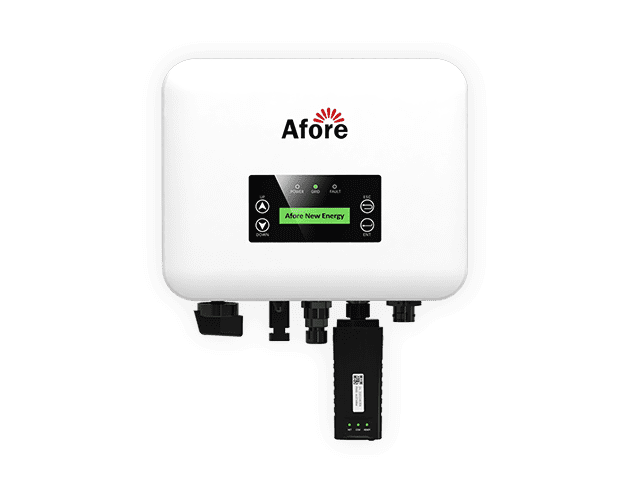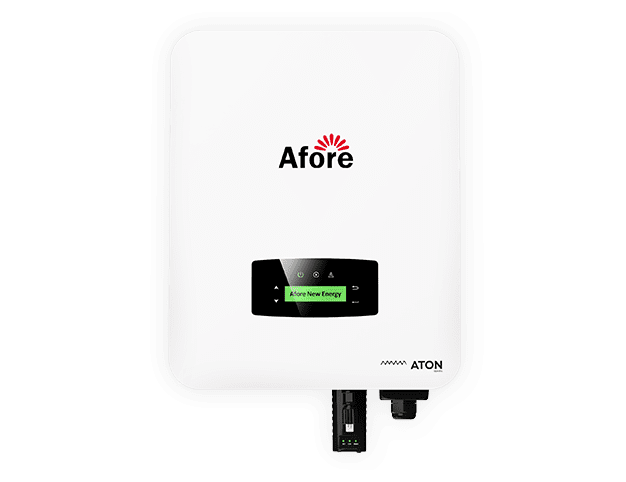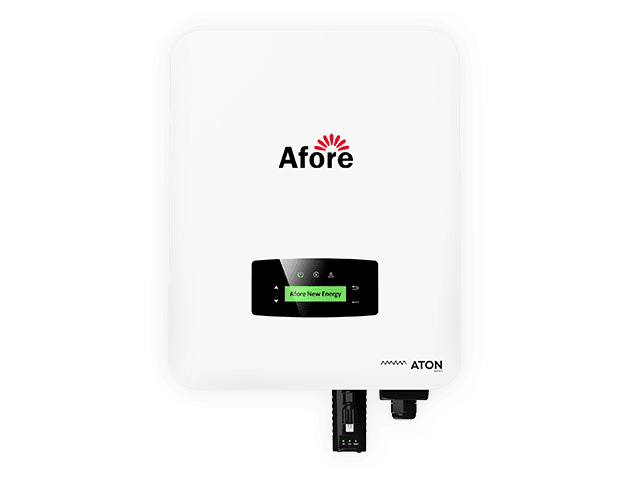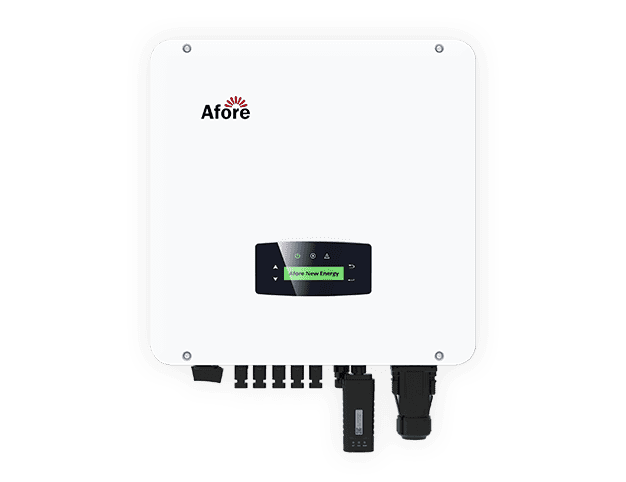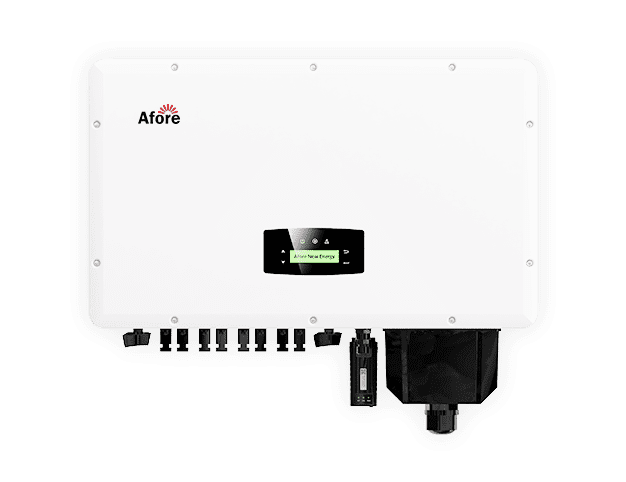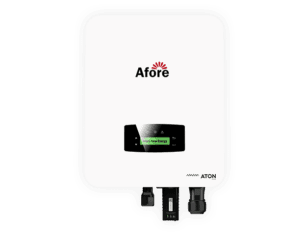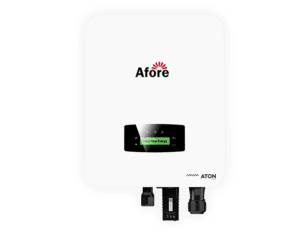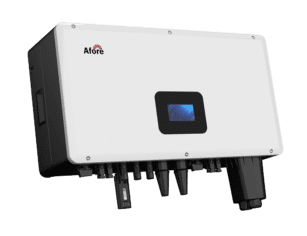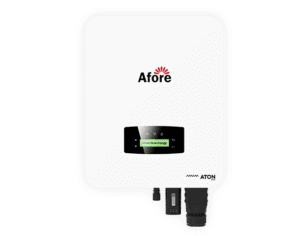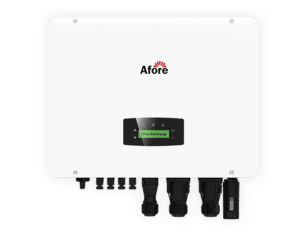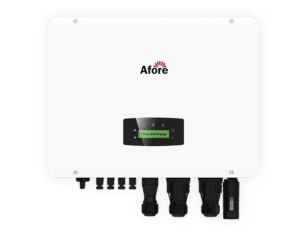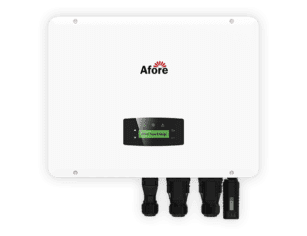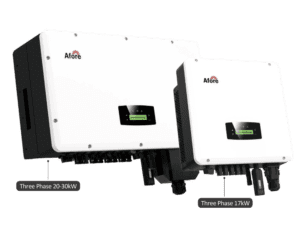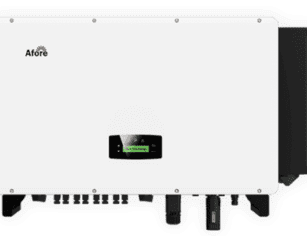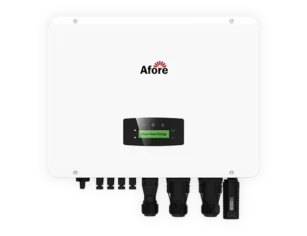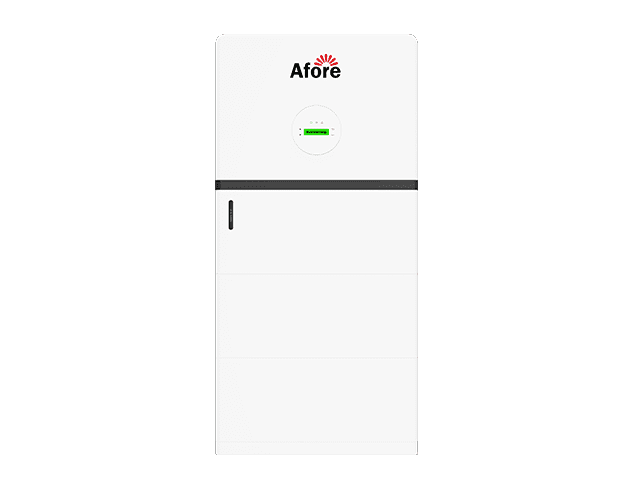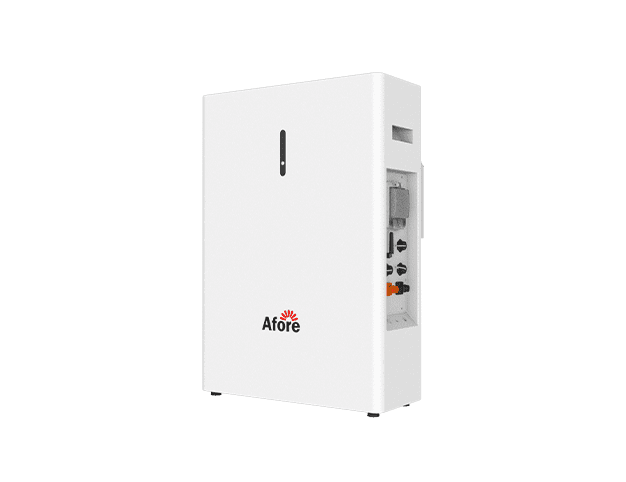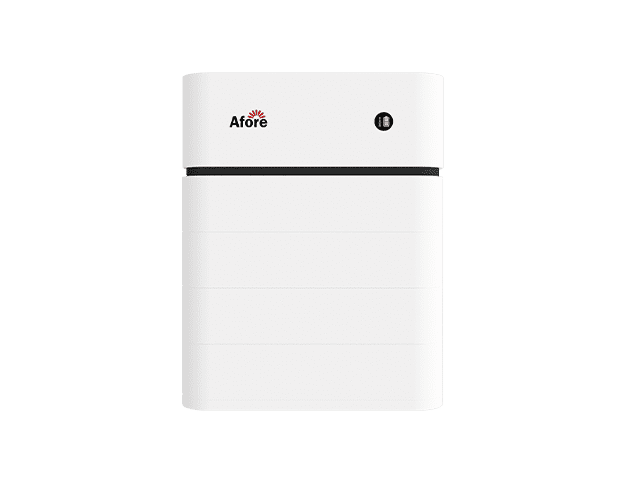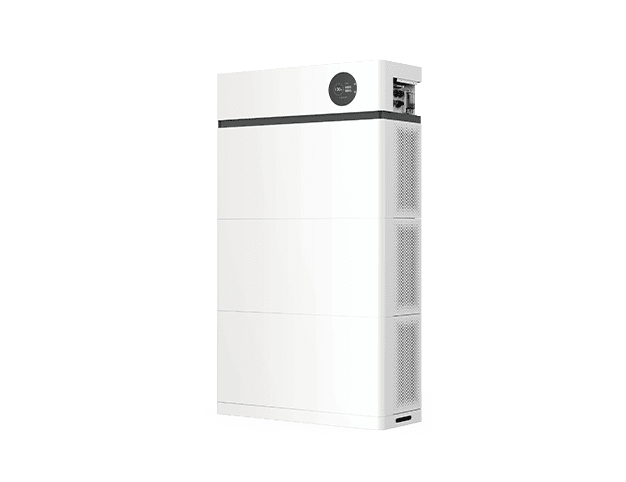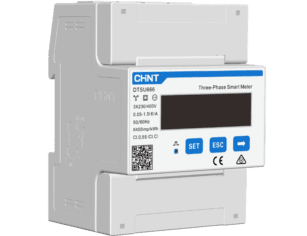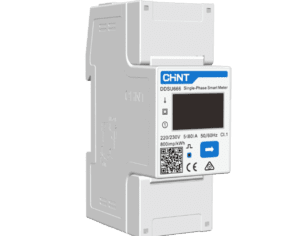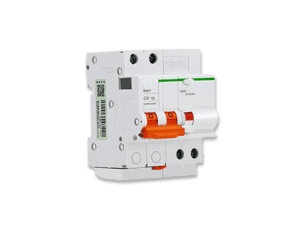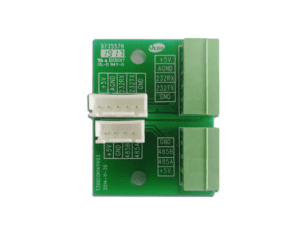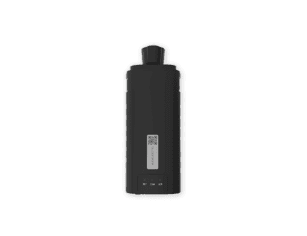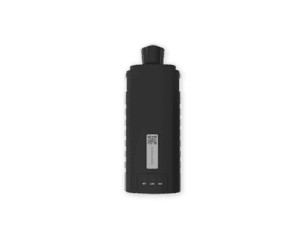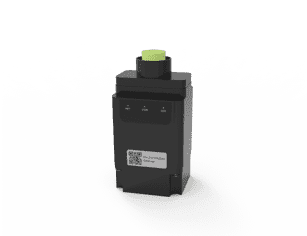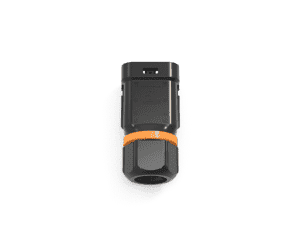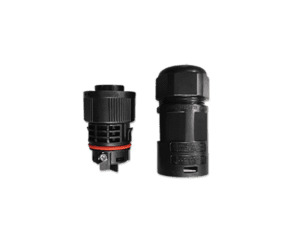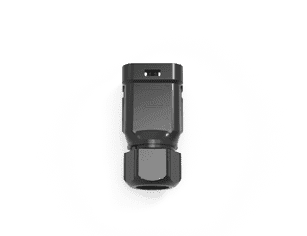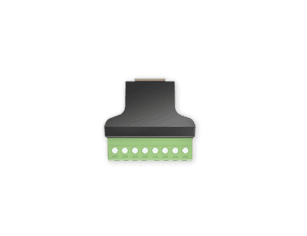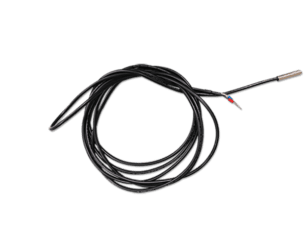Système solaire sans batterie : intelligent, simple et rentable
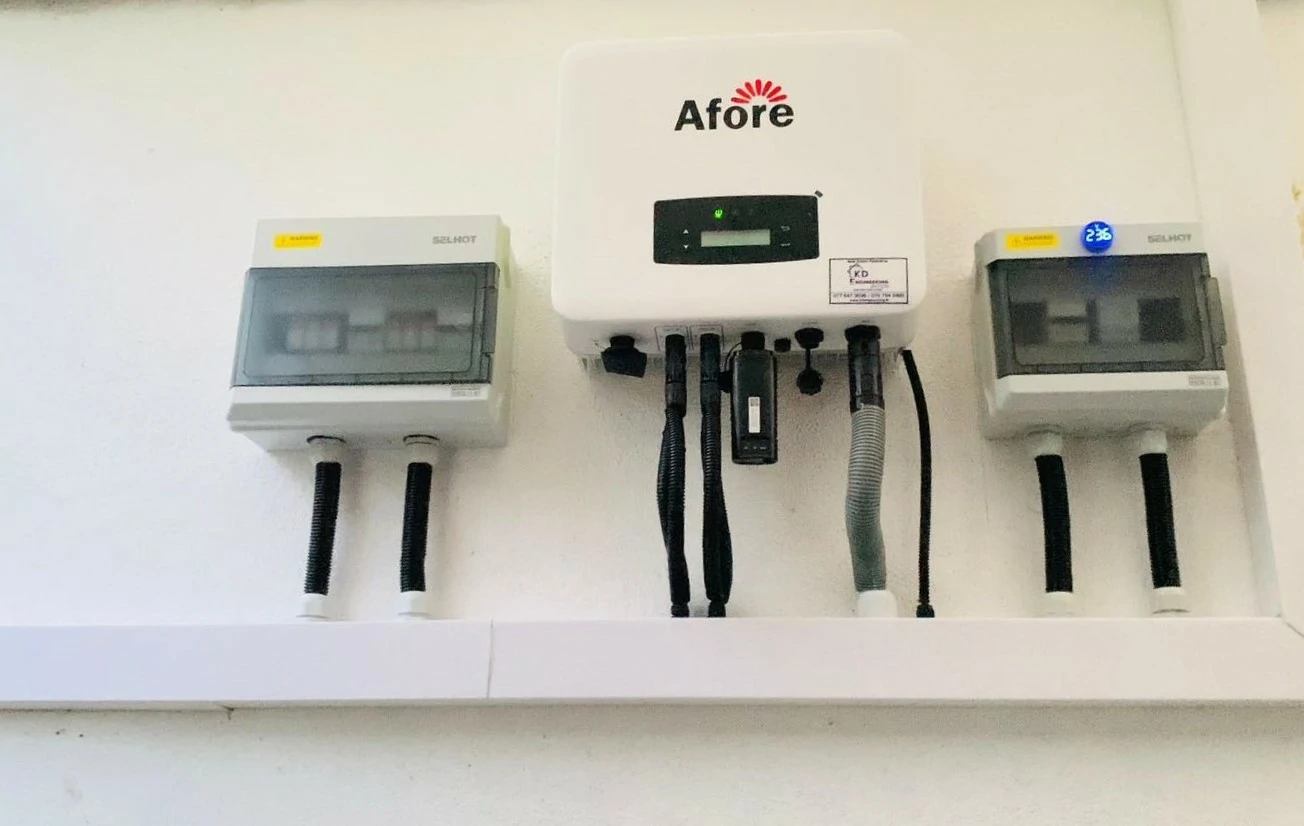
Table des matières
L'énergie solaire transforme rapidement la façon dont nous alimentons nos maisons et nos entreprises, en offrant une alternative plus propre et plus verte aux sources d'électricité traditionnelles. Mais alors que de plus en plus de personnes envisagent de passer à l'énergie solaire, une question se pose souvent : peut-on installer un système de chauffage solaire ? système solaire sans batterie? La réponse est un oui retentissant - et ce guide vous expliquera tout ce que vous devez savoir sur les installations solaires sans batterie, sur le rôle de l'énergie solaire et sur le rôle de l'énergie solaire dans la vie quotidienne. onduleur solaireLes systèmes d'énergie solaire, leurs avantages et leurs inconvénients, ainsi que des conseils pratiques pour tirer le meilleur parti de l'énergie solaire sans la stocker dans des batteries.
Introduction aux systèmes solaires sans batterie
Qu'est-ce qu'un système solaire sans batterie ?
En termes simples, un système solaire sans batterie désigne une installation photovoltaïque (PV) qui produit de l'électricité à partir de la lumière du soleil, mais qui ne stocke pas l'énergie dans des batteries en vue d'une utilisation ultérieure. Au lieu de cela, l'énergie produite est soit utilisée directement, soit envoyée au réseau, soit les deux. C'est ce qu'on appelle souvent un système solaire relié au réseau.
Ces systèmes s'appuient fortement sur le réseau en tant que "batterie virtuelle". Lorsque vos panneaux solaires produisent plus d'électricité que votre maison n'en consomme, l'excédent est exporté vers le réseau électrique. Lorsque le soleil ne brille pas, le réseau fournit de l'électricité. Cette configuration contraste avec les systèmes hors réseau qui dépendent des batteries pour stocker l'énergie solaire et fournir de l'électricité lorsque le soleil est couché.
Les systèmes à couplage direct, une autre forme d'installation solaire sans batterie, alimentent directement des charges CC spécifiques sans utiliser de batteries ou d'onduleurs. Par exemple, les pompes à eau solaires ou les petits moteurs peuvent fonctionner directement à partir des panneaux solaires pendant la journée.
Pourquoi envisager un système sans batterie ?
Le choix d'un système solaire sans batterie est souvent motivé par plusieurs facteurs :
- Coût initial moins élevé : Les batteries sont des composants coûteux des systèmes solaires. En évitant les batteries, on peut réduire les coûts d'installation de plusieurs milliers de dollars.
- Simplicité et moins d'entretien : Les batteries nécessitent une maintenance continue et un remplacement éventuel, ce qui augmente l'entretien à long terme. Les systèmes sans batterie simplifient le fonctionnement.
- Efficacité : Des pertes de conversion d'énergie se produisent lors de la charge et de la décharge de la batterie. L'utilisation de l'énergie provenant directement des panneaux solaires ou du réseau permet d'éviter ces pertes.
- Avantages pour l'environnement : Les piles contiennent des matériaux ayant un impact sur l'environnement. Les systèmes sans piles réduisent ces problèmes.
- Mesures d'incitation à la facturation nette : De nombreux services publics proposent des programmes de facturation nette qui créditent l'excédent d'énergie solaire exportée vers le réseau, ce qui rend les batteries moins nécessaires.
L'inconvénient majeur est que, sans batteries, la disponibilité de l'énergie solaire est liée aux heures d'ensoleillement et à la présence du réseau, de sorte que l'alimentation de secours pendant les pannes ou la nuit nécessite une planification supplémentaire.
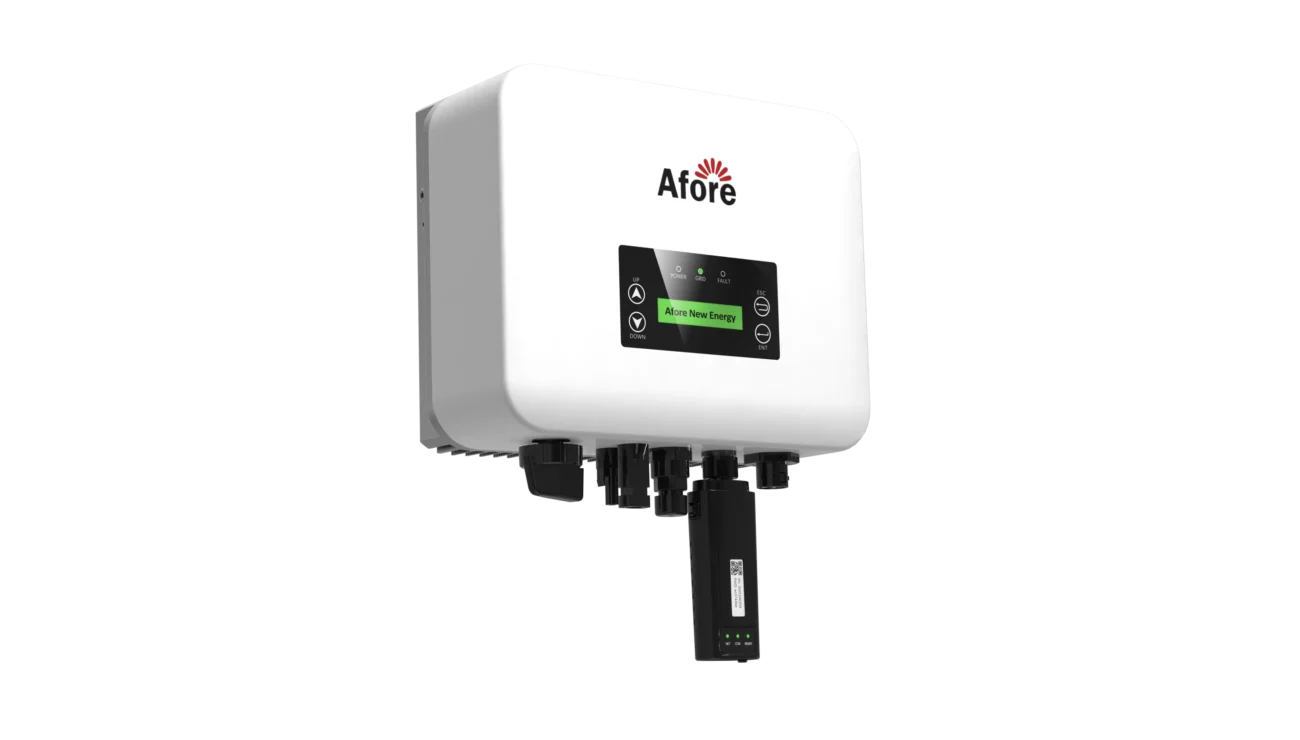
Comment les convertisseurs solaires fonctionnent-ils sans batterie ?
Rôle des onduleurs raccordés au réseau
Au cœur de tout système solaire sans batterie se trouve l'onduleur solaire. Cet appareil convertit le courant continu (CC) produit par les panneaux solaires en courant alternatif (CA), la forme utilisée par les appareils ménagers et le réseau électrique.
Les onduleurs connectés au réseau synchronisent spécifiquement la tension et la fréquence de l'énergie solaire avec celles du réseau électrique. Cette synchronisation est cruciale pour la sécurité et l'efficacité : elle empêche le système solaire de s'isoler (d'alimenter un réseau en panne, ce qui peut être dangereux pour les monteurs de lignes).
Ces onduleurs surveillent en permanence les conditions du réseau et ne fournissent de l'énergie que lorsque le réseau est stable. Ils sont également dotés d'une protection anti-îlotage et d'un contrôle du facteur de puissance, ce qui garantit une intégration parfaite avec le réseau.
Systèmes à couplage direct avec convertisseurs DC-to-DC
Pour des applications spécifiques, telles que le fonctionnement d'une pompe à eau ou d'un petit moteur, l'énergie solaire peut être utilisée directement, sans batterie ni onduleur. Dans ce cas, les panneaux solaires se connectent directement à la charge CC via un convertisseur CC/CC qui régule la tension pour protéger le moteur ou l'appareil.
Cette approche permet d'éviter la complexité et le coût des onduleurs et des batteries, mais elle ne fonctionne que pour les charges qui peuvent être alimentées en courant continu et, en général, uniquement pendant les heures de clarté.
Limites des onduleurs hybrides/hors réseau sans batterie
Les onduleurs hybrides et hors réseau gèrent généralement à la fois l'énergie solaire et le stockage sur batterie. Sans batterie, ces onduleurs ne peuvent pas fournir d'alimentation de secours ou de transfert de charge, ce qui limite considérablement leur utilité dans une configuration sans batterie.
Si vous envisagez d'installer un système hors réseau sans batteries, vous serez confronté à des problèmes tels que l'instabilité de l'alimentation et l'impossibilité de faire fonctionner les charges pendant les périodes de faible ensoleillement.
Avantages et inconvénients
Alors que l'adoption de l'énergie solaire se développe dans le monde entier, les propriétaires et les entreprises se demandent si un système solaire sans batterie constitue un investissement intelligent à long terme. Si cette configuration présente de nombreux avantages, elle n'est pas sans limites. Comprendre les avantages et les inconvénients de cette configuration vous aidera à prendre une décision éclairée en fonction de vos besoins énergétiques, de votre budget et de vos attentes.
Examinons les avantages et les inconvénients en détail.
Avantages d'un système solaire sans batterie
Un système solaire sans batterie n'est pas seulement une option économique, c'est une configuration rationalisée et efficace qui convient à de nombreux utilisateurs, en particulier dans les régions où l'accès au réseau est stable et où les politiques de facturation nette sont favorables. Voici les avantages les plus convaincants.
1. Coût initial moins élevé
L'une des principales motivations pour se passer de batterie est l'accessibilité financière. Les batteries sont l'un des composants les plus coûteux d'un système solaire, représentant souvent 30% à 50% du coût total de l'installation. En éliminant les batteries, les propriétaires peuvent réduire considérablement leur investissement initial et bénéficier d'un retour sur investissement plus rapide.
En outre, le fait de ne pas utiliser de batterie de stockage réduit le besoin de composants supplémentaires tels que les contrôleurs de charge et les configurations de sauvegarde complexes, ce qui permet de réduire encore les coûts.
2. Installation et entretien simplifiés
Avec moins de composants en jeu, un système solaire sans batterie est plus simple à installer. Les installateurs n'ont pas à se préoccuper du logement de la batterie, de la ventilation ou du câblage supplémentaire. Cela réduit également les points de défaillance potentiels, ce qui améliore la fiabilité du système à long terme.
La maintenance est un autre domaine dans lequel ces systèmes se distinguent. En l'absence de batteries à surveiller, à remplacer ou à entretenir, les propriétaires évitent les problèmes liés aux inspections périodiques, aux contrôles de tension et aux systèmes de gestion thermique.
3. Amélioration de l'efficacité du système
Les batteries sont pratiques mais intrinsèquement inefficaces. Elles perdent de l'énergie lors des phases de charge et de décharge - généralement 10%-20% au total. Un système solaire sans batterie envoie l'énergie directement à vos appareils ou au réseau, ce qui minimise les pertes de conversion.
Cela signifie que vous obtenez plus d'énergie utilisable à partir de chaque rayon de soleil capté par vos panneaux solaires, ce qui rend votre système plus efficace au quotidien.
4. Respect de l'environnement
Les batteries, en particulier les variétés lithium-ion ou plomb-acide, contiennent des métaux lourds et des produits chimiques qui doivent être éliminés avec précaution. Leur production contribue également à la dégradation de l'environnement et aux émissions de CO₂. Les systèmes sans batterie éliminent cet impact, ce qui en fait un choix plus respectueux de l'environnement.
En utilisant l'énergie solaire telle qu'elle est produite et en minimisant les besoins en composants à forte intensité de ressources, vous pouvez réduire encore davantage votre empreinte carbone.
5. Admissibilité au comptage net
La plupart des systèmes solaires raccordés au réseau et dépourvus de batteries sont éligibles aux programmes de facturation nette, dans le cadre desquels vous êtes crédité de tout surplus d'électricité renvoyé au réseau de distribution. Cette incitation financière vous permet d'économiser encore plus d'argent sur votre facture d'électricité sans avoir besoin de stockage.
Le comptage net transforme effectivement le réseau en "batterie virtuelle", stockant l'énergie excédentaire pendant la journée et fournissant de l'électricité lorsque vos panneaux ne produisent pas d'énergie.
6. Facilité de mise à niveau et d'évolutivité
Sans batteries, la mise à niveau de votre système solaire est plus simple. Vous pouvez étendre votre installation ou mettre à niveau votre onduleur solaire sans avoir à tenir compte de la capacité de stockage ou de la compatibilité des batteries. Si vous souhaitez par la suite ajouter des batteries, de nombreux onduleurs sont aujourd'hui compatibles avec les systèmes hybrides, ce qui permet une intégration transparente.
Les défis des systèmes solaires sans batterie
Malgré les avantages qu'il présente, le passage à un système sans pile n'est pas idéal pour tout le monde. Les caractéristiques mêmes qui rendent ces systèmes simples et rentables peuvent devenir des limites en fonction de vos objectifs énergétiques, de votre mode de vie et de la fiabilité du réseau.
1. Pas d'alimentation de secours pendant les pannes
L'un des principaux inconvénients d'un système solaire sans batterie est l'absence d'alimentation de secours. Les onduleurs raccordés au réseau sont conçus pour s'éteindre en cas de coupure de courant, une fonction de sécurité connue sous le nom d'anti-îlotage. Cela signifie que lorsque le réseau est en panne, vos panneaux solaires ne produisent pas d'électricité, même en plein soleil.
Si vous vivez dans une région où les pannes d'électricité sont fréquentes ou où l'accès au réseau n'est pas fiable, cette configuration ne vous apportera peut-être pas la sécurité énergétique dont vous avez besoin.
2. Fonctionnement à la lumière du jour
Les systèmes sans batterie ne fonctionnent que lorsque la lumière du soleil est disponible. La nuit ou pendant les périodes prolongées de couverture nuageuse, votre maison tire de l'électricité du réseau. Si vous visez l'indépendance énergétique totale ou la vie hors réseau, vous aurez besoin de batteries ou d'une autre source d'énergie de secours, comme un générateur.
Pour les propriétaires qui souhaitent déplacer la consommation d'énergie vers la nuit (comme pour le chargement des véhicules électriques), les systèmes sans batterie peuvent s'avérer contraignants.
3. Dépendance à l'égard de la grille
Si le comptage net peut être financièrement intéressant, il vous rend également dépendant de votre fournisseur d'énergie local. Votre production solaire est directement liée à la manière dont votre fournisseur d'énergie gère les tarifs de rachat, les frais de connexion et les règles d'accès au réseau. Ces programmes peuvent changer au fil du temps ou disparaître complètement, ce qui affecte vos économies à long terme.
En revanche, un système solaire plus batterie offre une plus grande autonomie.
4. Pas de capacité de transfert de charge
En l'absence de batteries, il n'est pas possible de stocker l'énergie excédentaire en vue d'une utilisation ultérieure. Cela limite votre capacité à transférer les charges énergétiques lourdes, comme le fonctionnement d'un lave-vaisselle ou la recharge d'une voiture, vers les heures creuses, lorsque la production solaire diminue.
Même les systèmes intelligents de gestion de l'énergie à domicile perdent de leur efficacité s'ils n'ont pas la possibilité de stocker et de décaler dans le temps la consommation d'électricité.
5. Fonctionnalité limitée dans les environnements hors réseau
Si vous envisagez de vous isoler complètement du réseau, par exemple dans une cabane isolée ou une petite maison mobile, un système solaire sans batterie n'est pas pratique. Vous aurez besoin de batteries ou d'autres systèmes de stockage pour maintenir une alimentation électrique constante, 24 heures sur 24
Les systèmes à utilisation directe peuvent faire fonctionner certains appareils pendant la journée (comme les pompes à eau ou les ventilateurs), mais ils ne permettent pas de vivre 24 heures sur 24 et 7 jours sur 7 sans stockage.
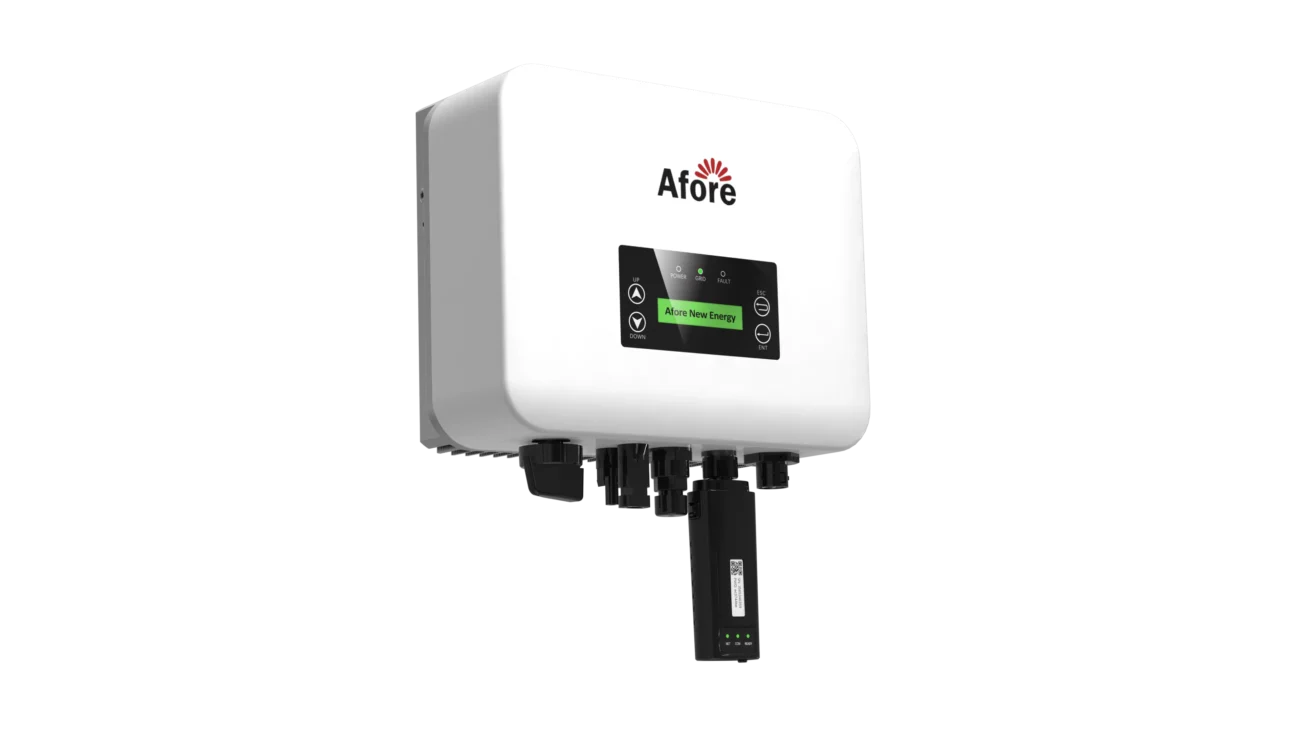
Cas d'utilisation et applications
Tous les propriétaires ou entreprises n'ont pas besoin d'une installation solaire complète avec batterie. En fait, un système solaire sans batterie peut être incroyablement polyvalent lorsqu'il est utilisé dans le bon contexte. Qu'il s'agisse d'alimenter les maisons pendant les heures d'ensoleillement maximum ou de faire fonctionner des appareils individuels directement à partir des panneaux solaires, les cas d'utilisation sont vastes et étonnamment pratiques.
Voyons où et comment les systèmes solaires sans batterie se distinguent vraiment.
Installations de toitures résidentielles raccordées au réseau
Pour la plupart des propriétaires raccordés à un réseau électrique stable, un système solaire sans batterie est la configuration la plus courante et la plus rentable.
Intégration transparente avec le réseau d'électricité
Dans un système résidentiel typique relié au réseau, les panneaux solaires produisent de l'électricité pendant la journée et l'acheminent vers un onduleur solaire, qui convertit le courant continu des panneaux en courant alternatif pour l'usage domestique. L'électricité excédentaire est exportée vers le réseau en échange de crédits dans le cadre d'un programme de facturation nette.
Cette configuration permet aux propriétaires de maison de :
- Alimenter directement leur maison en énergie solaire pendant la journée
- Tirer de l'électricité du réseau lorsque la production solaire est faible (par exemple, la nuit).
- Réduire, voire supprimer, les factures d'électricité en fonction de la production solaire et des habitudes d'utilisation.
Et tout cela se fait sans qu'il soit nécessaire de recourir à des batteries de stockage.
Exemple concret : Utilisation de la lumière du jour Focus
Prenons l'exemple d'un foyer dont les occupants sont généralement à la maison pendant la journée - ils travaillent à distance, cuisinent ou font la lessive. Avec un système sans batterie, les appareils tels que les climatiseurs, les machines à laver et les ordinateurs peuvent fonctionner directement à l'énergie solaire pendant la journée, ce qui réduit considérablement la dépendance à l'égard du réseau.
Évolutif et facile à mettre à jour
Les onduleurs solaires modernes utilisés dans ces installations permettent souvent des mises à niveau ultérieures. Si vos besoins en énergie augmentent ou si vous souhaitez ajouter ultérieurement une batterie de stockage, systèmes d'onduleurs hybrides vous permettent de vous développer sans avoir à remplacer l'ensemble de votre installation.
Alimentation directe de charges en courant continu ou en courant alternatif de petite taille
En dehors de l'intégration résidentielle complète, un autre cas d'utilisation très efficace d'un système solaire sans batterie est l'alimentation directe de charges à courant continu ou de petites charges à courant alternatif. Cette méthode permet de contourner la complexité des systèmes connectés au réseau et du stockage.
Charges en courant continu : Pompes, ventilateurs et autres
Les panneaux solaires produisent nativement du courant continu, ce qui les rend parfaits pour faire fonctionner directement des moteurs et des appareils à courant continu, sans onduleur ni batterie. Cette configuration est particulièrement populaire dans :
- Agriculture : Pompes à eau pour l'irrigation
- Serres : Ventilateurs
- Cabanes ou véhicules de loisirs non raccordés au réseau : Systèmes d'éclairage, réfrigérateurs portables
Ces systèmes à utilisation directe sont généralement conçus pour fonctionner uniquement pendant la journée, ce qui est souvent suffisant.
Charges CA avec onduleur (toujours sans batterie)
Si votre application nécessite une alimentation en courant alternatif, par exemple pour alimenter un petit outil ou un appareil, vous pouvez ajouter un onduleur solaire entre le panneau et l'appareil. Cette approche est particulièrement utile dans les installations mobiles ou distantes où la simplicité et la portabilité comptent plus que la disponibilité permanente de l'alimentation.
Il est important de dimensionner correctement le système : si votre panneau solaire produit 200 W et que votre appareil consomme 150 W, le système devrait fonctionner de manière fiable pendant les périodes de fort ensoleillement.
Scénario réel : Cabine hors réseau
Imaginez une cabane de week-end avec des besoins énergétiques minimes : quelques lampes LED, un ventilateur et un chargeur de téléphone. Un système solaire compact sans batterie peut facilement répondre à ces besoins pendant la journée. Il n'est pas nécessaire d'utiliser des batteries coûteuses lorsque les besoins en énergie sont faibles et limités à la lumière du jour.
Faire fonctionner les appareils à courant alternatif sans piles
L'une des questions les plus fréquemment posées sur les systèmes solaires sans batterie est de savoir s'ils peuvent alimenter des appareils domestiques courants de climatisation, des réfrigérateurs ou des téléviseurs. La réponse est oui, dans les bonnes conditions.
Utilisation d'un onduleur solaire pour alimenter des appareils à courant alternatif
La clé pour faire fonctionner des appareils à courant alternatif sur un système sans batterie est de disposer d'un onduleur solaire robuste. Cet appareil se charge de convertir le courant continu de vos panneaux solaires en courant alternatif compatible avec le réseau.
Dans un système connecté au réseau, l'onduleur gère la production solaire et synchronise la fourniture d'électricité avec le réseau. Si la production solaire est supérieure à votre consommation, l'excédent est renvoyé au réseau. Si elle est inférieure, le réseau compense la différence.
Charges courantes en courant alternatif supportées sans batterie
Voici quelques exemples concrets d'appareils à courant alternatif que les propriétaires alimentent régulièrement sans stockage sur batterie :
- Climatiseurs : Souvent le plus gros consommateur d'électricité domestique, les climatiseurs peuvent être alimentés efficacement pendant les heures d'ensoleillement maximum, lorsque la production solaire est la plus élevée. La climatisation pendant la journée est donc à la fois pratique et économique.
- Machines à laver : Elles peuvent fonctionner en milieu de journée lorsque la production solaire est la plus forte, ce qui réduit la dépendance vis-à-vis du réseau.
- Téléviseurs et ordinateurs : Facilement alimentés s'ils sont utilisés pendant les heures de clarté.
- Chauffe-eau (électriques) : Peut être programmé pour chauffer l'eau lorsque l'énergie solaire est abondante.
Comment garantir une utilisation fiable des appareils électroménagers
Pour faire fonctionner les appareils à courant alternatif sans batterie, il convient de prendre en compte les éléments suivants :
- Dimensionnement du système : Assurez-vous que votre installation solaire est suffisamment grande pour répondre à la puissance combinée de vos appareils de jour.
- Capacité de l'onduleur : Choisissez un onduleur capable de gérer les pics de demande sans surcharge.
- Horaires d'utilisation : Aligner l'utilisation des appareils sur les heures de pointe de la production solaire (généralement de 10 heures à 16 heures).
Limitation à la lumière du jour
L'inconvénient évident est que ces appareils ne fonctionnent que pendant les heures d'ensoleillement, à moins d'être connectés au réseau. Ainsi, si vous pouvez faire fonctionner efficacement votre climatisation pendant la journée, elle ne fonctionnera pas la nuit, à moins que vous ne disposiez d'un réseau électrique ou que vous n'optiez pour une installation solaire avec batterie.
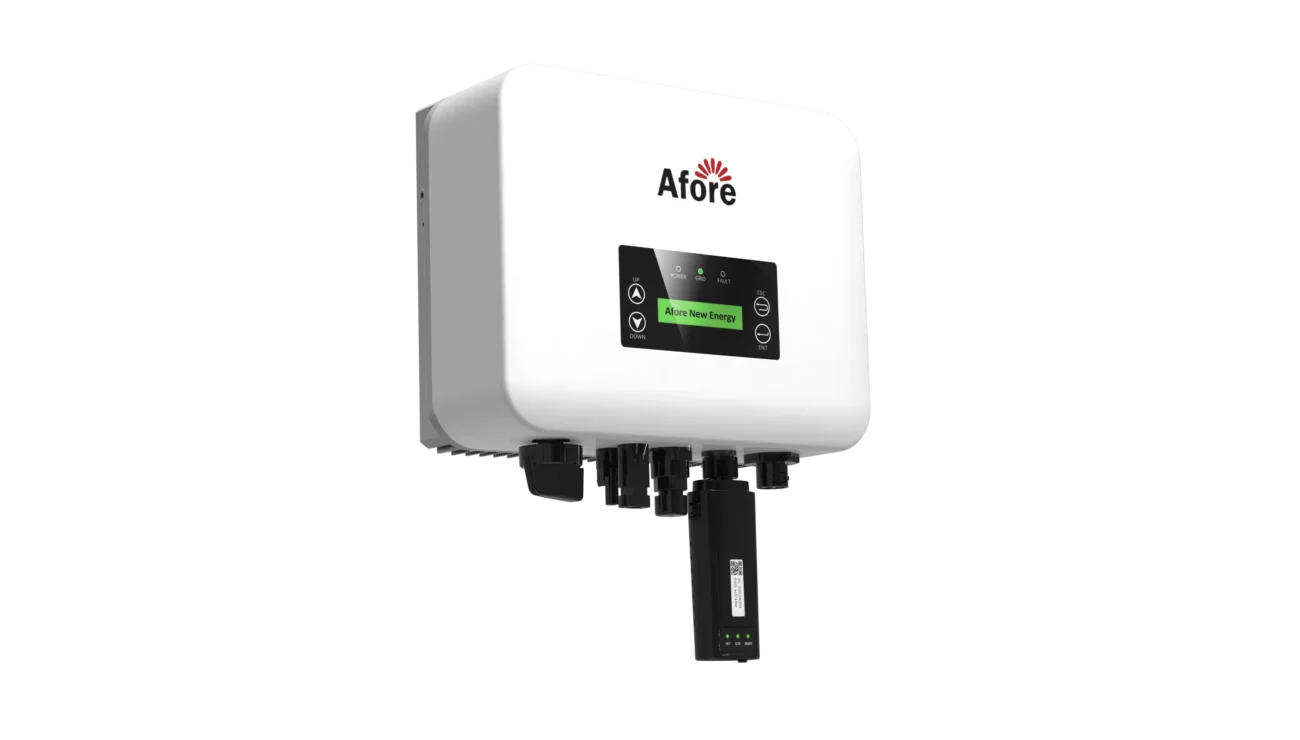
Étapes de dimensionnement et d'installation
Évaluer vos besoins en énergie
Avant d'installer un système solaire sans batterie, évaluez votre consommation d'énergie quotidienne et les demandes de charge de pointe. Faites attention aux appareils gourmands en énergie tels que les climatiseurs, les réfrigérateurs et les chauffe-eau.
Calculez votre charge moyenne pendant la journée, car le solaire sans batterie n'alimente les charges que lorsque le soleil brille.
Choisir le bon onduleur solaire
Le choix de votre onduleur solaire est essentiel. Recherchez :
- MPPT (Maximum Power Point Tracking) : Optimise le rendement du panneau en cas de variation de la lumière du soleil.
- Protection contre l'îlotage : Assure la sécurité en cas de panne du réseau.
- Compatibilité avec le réseau : Correspond à la tension et à la fréquence du réseau local.
- Garantie et fiabilité : Recherchez des marques ayant fait leurs preuves et bénéficiant d'une assistance solide.
Aperçu du processus d'installation
L'installation comprend le montage des panneaux solaires, le câblage de l'onduleur et le raccordement au panneau électrique de votre maison et au réseau. L'approbation du permis et les inspections sont standard.
Pour les applications à courant continu direct, installez des convertisseurs de courant continu à courant continu dimensionnés pour la charge afin de maintenir une tension stable.
Intégration aux systèmes de climatisation
Pour les unités AC :
- Utiliser des onduleurs connectés au réseau capables de gérer la charge.
- Installer des commutateurs de transfert pour passer de l'énergie solaire à l'énergie du réseau en cas de besoin.
- Découvrez les climatiseurs solaires à courant continu conçus pour fonctionner directement à l'énergie solaire.
Correctement dimensionnée et intégrée, cette installation peut réduire considérablement les coûts énergétiques de votre climatisation sans la complexité du stockage par batterie.
Batterie ou absence de batterie : Qu'est-ce qui est le mieux ?
Comparaison des coûts
Un système solaire sans batterie coûte beaucoup moins cher au départ. Les batteries peuvent ajouter 30-50% aux coûts d'installation. Cependant, les systèmes de batteries offrent une solution de secours et peuvent réduire la consommation du réseau de manière plus efficace.
Mesures de performance
Sans batteries, vous évitez les pertes de conversion, ce qui améliore l'efficacité du système. Cependant, l'impossibilité de stocker l'énergie signifie que vous devez compter sur le réseau ou faire face à des pannes.
Fiabilité et résilience
Les systèmes à batterie offrent une autonomie en cas de coupure de courant et alimentent votre maison la nuit, ce qui renforce la résilience. Les systèmes sans batterie dépendent entièrement de la stabilité du réseau, ce qui les rend moins fiables en cas de panne.
Conclusion et recommandations
Un système solaire sans batterie représente une option convaincante pour de nombreux propriétaires désireux de réduire leurs coûts énergétiques avec moins de complexité et d'investissement initial. En tirant parti d'un onduleur solaire de haute qualitéL'installation solaire sans batterie convertit et synchronise efficacement l'énergie solaire avec le réseau, fournissant de l'énergie propre pendant les heures de clarté.
Bien que le stockage sur batterie soit pratique et constitue une source d'énergie de secours, il n'est pas indispensable pour tirer profit de l'énergie solaire. Une évaluation minutieuse de vos besoins en énergie, de la stabilité du réseau local et des incitations disponibles vous aidera à décider si un système solaire sans batterie vous convient.
Si vous souhaitez réduire vos factures d'électricité tout en conservant un système solaire simple et rentable, le choix d'un onduleur solaire fiable sans batterie est un choix judicieux. Et n'oubliez pas que vous pourrez toujours ajouter des batteries plus tard, en fonction de l'évolution de votre budget et de vos besoins énergétiques.
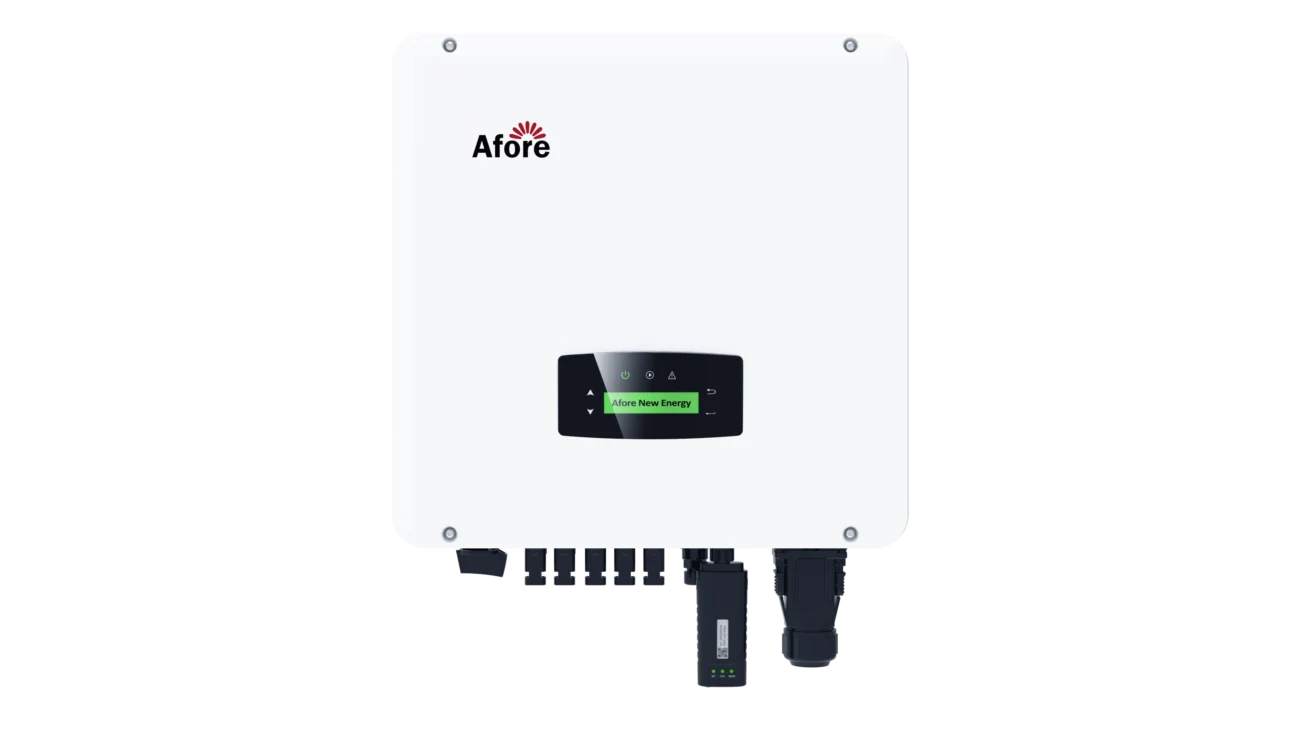
Questions fréquemment posées
1. Peut-on faire fonctionner un système solaire sans batterie ?
Oui, absolument. Un système solaire sans batterie n'est pas seulement possible, il est largement utilisé, en particulier dans les installations résidentielles raccordées au réseau. Dans ce type d'installation, les panneaux solaires produisent de l'électricité pendant la journée, qui est immédiatement utilisée pour alimenter des appareils ou injectée dans le réseau. Un onduleur solaire est essentiel pour convertir l'électricité en courant continu de vos panneaux en courant alternatif compatible avec le système électrique de votre maison.
Cependant, il est important de comprendre que sans batteries, le système ne stocke pas l'énergie. Il ne fournira donc pas d'électricité la nuit ou en cas de panne, à moins que vous ne soyez connecté au réseau.
2. Peut-on construire un système solaire sans batterie ?
Définitivement. De nombreux systèmes solaires photovoltaïques sont spécifiquement conçus pour fonctionner sans batterie, en particulier dans les pays ou régions dotés d'un réseau électrique stable. La construction d'un système solaire sans batterie réduit considérablement les coûts d'installation et de maintenance. Cela permet également de rationaliser le système puisqu'il n'y a pas besoin de batteries, de régulateurs de charge ou de mécanismes de commutation de secours.
Les onduleurs solaires modernes utilisés dans ces constructions sont souvent hybrides, ce qui signifie que vous pouvez ajouter des batteries ultérieurement si vos besoins évoluent. Cette flexibilité fait des systèmes sans batterie un excellent point de départ pour les propriétaires désireux de se lancer dans l'énergie solaire avec un budget limité.
3. L'énergie solaire est-elle meilleure avec ou sans batterie ?
Cela dépend entièrement de vos objectifs et des conditions locales.
- Mieux avec une batterie : si vous avez besoin d'une alimentation de secours en cas de panne, si vous souhaitez stocker l'énergie excédentaire pour l'utiliser la nuit ou si vous visez l'indépendance hors réseau, il est judicieux d'ajouter des batteries. Elles assurent l'autonomie, la stabilité et la capacité de faire fonctionner une maison même lorsque le soleil ne brille pas ou que le réseau est en panne.
- Mieux sans batterie : si vous cherchez à réduire vos factures d'électricité et que vous vivez dans une région où l'accès au réseau est fiable et où il existe des politiques de facturation nette, un système solaire sans batterie est souvent la solution la plus judicieuse sur le plan financier. Il est moins cher à installer, plus facile à entretenir et très efficace pendant la journée.
Les deux options présentent des avantages et des inconvénients. Pour beaucoup, commencer sans batterie et ajouter du stockage plus tard offre le meilleur des deux mondes.
4. Combien de temps une maison peut-elle fonctionner grâce à l'énergie solaire ?
Sans batterie ni connexion au réseau, une maison ne peut fonctionner à l'énergie solaire que tant que le soleil brille et que la production satisfait ou dépasse la demande.
Dans un système solaire sans batterie, vos appareils dépendent de la production solaire en temps réel. Pendant les heures d'ensoleillement, généralement de 10 heures à 16 heures, vous pouvez alimenter votre maison tant que vos panneaux produisent suffisamment d'électricité. Après le coucher du soleil ou en cas de forte couverture nuageuse, votre système ne peut pas fournir d'électricité, à moins que vous ne soyez relié au réseau.
Pour une alimentation continue 24 heures sur 24 et 7 jours sur 7, il faut l'un ou l'autre :
- Un système relié au réseau (qui tire de l'énergie lorsque l'énergie solaire n'est pas suffisante), ou
- Un système de batterie pour stocker l'énergie pour une utilisation nocturne.
5. Comment faire fonctionner le courant alternatif sur l'énergie solaire sans batterie ?
Faire fonctionner un climatiseur sur un système solaire sans batterie est tout à fait possible, mais cela nécessite un dimensionnement et une planification minutieux.
Voici comment :
- Utilisez un onduleur relié au réseau : Connectez vos panneaux solaires à un onduleur solaire qui alimente directement le système électrique de votre maison.
- Faites fonctionner la climatisation pendant les heures d'ensoleillement maximum : Les climatiseurs consomment beaucoup d'énergie, c'est pourquoi il est idéal de les faire fonctionner entre la fin de la matinée et le début de l'après-midi, lorsque la production solaire est la plus élevée.
- Veillez à ce que la capacité des panneaux soit suffisante : Votre installation solaire doit être dimensionnée en fonction de la puissance de votre climatiseur. Par exemple, un climatiseur de 1,5 tonne peut nécessiter au moins 1,5 à 2 kW de production solaire en temps réel.
- Évitez les surcharges par temps nuageux : Si votre production solaire chute soudainement (en cas de couverture nuageuse, par exemple), le réseau peut fournir un complément d'énergie, mais si vous n'êtes pas raccordé au réseau et que vous n'avez pas de batterie, le courant alternatif risque de s'arrêter.
Donc, oui, c'est faisable. Il suffit de disposer d'un système bien conçu et, idéalement, d'un onduleur solaire prêt pour l'hybride afin de gérer les fluctuations de charge.
6. 6. Existe-t-il des incitations gouvernementales pour les systèmes solaires sans batterie ?
Oui. Dans de nombreuses régions, en particulier aux États-Unis, en Europe et dans certaines parties de l'Asie, les gouvernements offrent des crédits d'impôt, des remises et des incitations basées sur les performances pour l'installation de systèmes d'énergie solaire, même sans batteries.
Par exemple :
- Le crédit d'impôt fédéral américain pour les investissements solaires (ITC) vous permet de déduire un pourcentage du coût du système de vos impôts fédéraux, que vous incluiez ou non le stockage.
- De nombreux États et sociétés de services publics proposent un système de comptage net, qui vous permet d'obtenir des crédits de facturation pour l'énergie solaire excédentaire renvoyée vers le réseau.
N'oubliez pas de vérifier auprès de votre fournisseur d'énergie solaire ou de votre compagnie d'électricité locale quelles sont les mesures d'incitation en vigueur dans votre région.
7. 7. Qu'advient-il de l'énergie excédentaire dans un système solaire sans batterie ?
Dans un système solaire connecté au réseau et sans batterie, l'électricité excédentaire produite par vos panneaux pendant la journée est renvoyée vers le réseau. Grâce à la facturation nette, votre compagnie d'électricité vous accorde des crédits pour cette énergie, qui peuvent être utilisés pour compenser votre consommation d'électricité pendant les périodes où vos panneaux ne produisent pas, comme la nuit ou pendant les orages.
Si vous êtes complètement hors réseau et sans batterie, l'énergie excédentaire n'est pas utilisée, sauf si vous alimentez des charges en temps réel (comme le chargement d'un chauffe-eau ou le fonctionnement d'un moteur).
8. Puis-je ajouter des batteries à mon système solaire ultérieurement ?
Oui, et c'est l'un des principaux avantages de commencer avec un système sans batterie. Si votre système est installé à l'aide d'un onduleur solaire hybride, vous pouvez ajouter une batterie de stockage à tout moment sans avoir à remplacer les composants existants.
Les propriétaires bénéficient ainsi d'une certaine souplesse :
- Commencez par un système solaire sans batterie pour minimiser les coûts initiaux.
- Contrôler l'utilisation et les économies réalisées au fil du temps
- Ajoutez des batteries plus tard si vos besoins en énergie augmentent ou si la fiabilité du réseau devient préoccupante.
Veillez simplement à ce que votre installateur utilise des composants évolutifs et prévoie des possibilités d'extension.
9. Un onduleur solaire fonctionne-t-il toujours sans batterie ?
Absolument. En fait, l'onduleur solaire est le cœur de la plupart des systèmes sans batterie. Il convertit le courant continu produit par vos panneaux en courant alternatif utilisable pour votre maison. Il gère également la synchronisation en temps réel avec le réseau, ce qui garantit un fonctionnement sans faille.
De nombreux onduleurs sont conçus spécifiquement pour les systèmes solaires sans batterie, bien que les modèles hybrides offrent une plus grande flexibilité à long terme. Que vous prévoyiez ou non d'ajouter des batteries, l'onduleur est essentiel et reste pleinement opérationnel.




